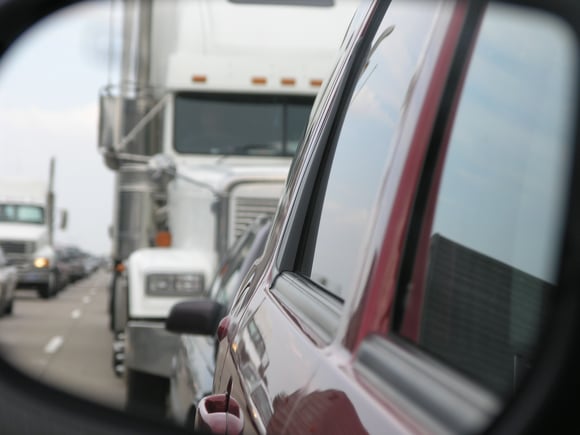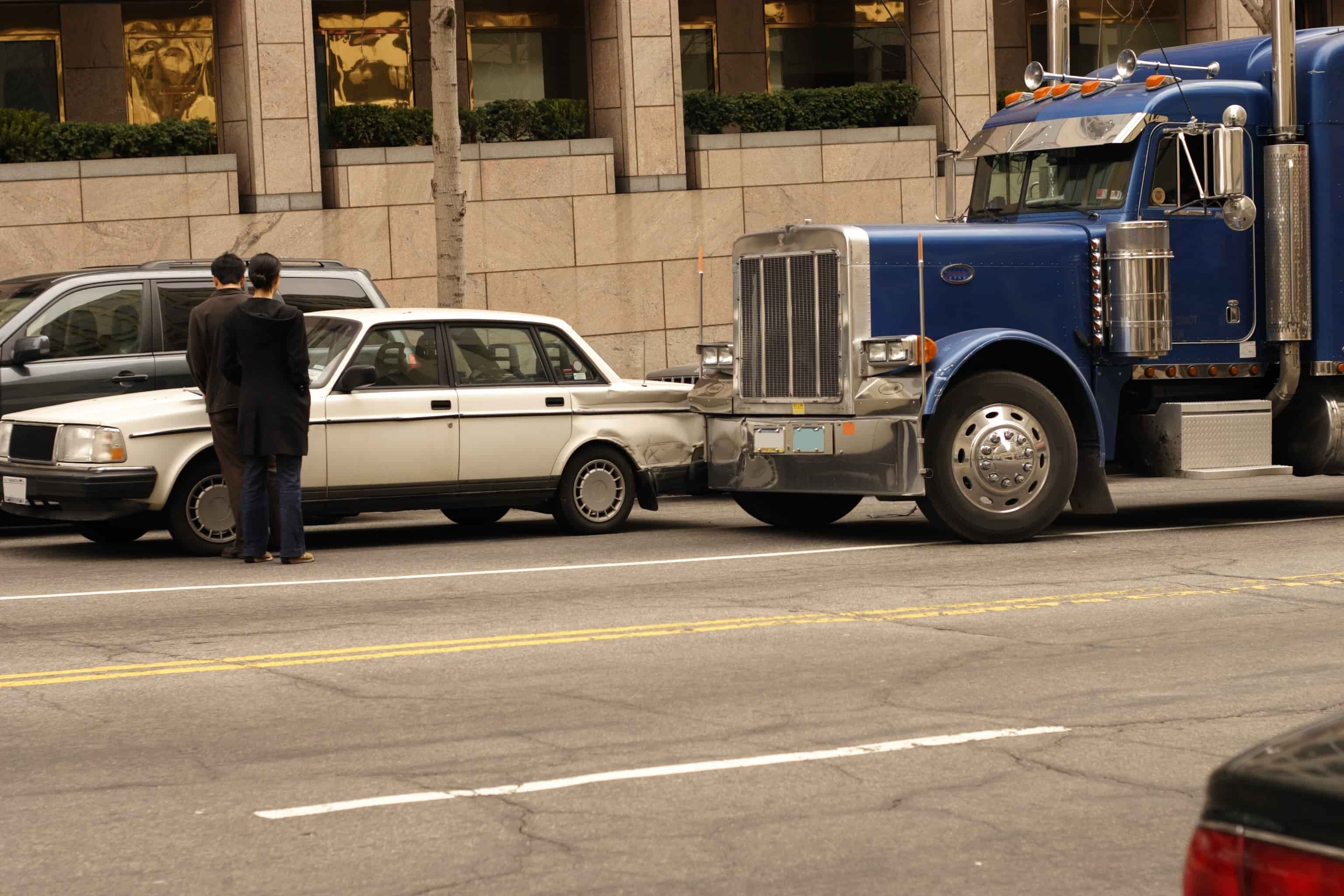How to Calculate Proper Following Distance Part 1
Recognize the Hazards
A key factor in rear-end crashes is improper following distance. In order to determine how much following distance is required to bring a tractor-trailer to a complete stop, drivers first need to know how much stopping distance their vehicle requires. A tractor-trailer driving 65 mph travels at a rate of approximately 100 feet per second. A fully loaded tractor-trailer requires a minimum of 665 feet to reach a complete stop. The table below demonstrates how stopping distance is calculated.
Calculate Stopping Distance
| Seconds | Rate | TOTAL FTS | |||
| Perception Time | 1.5 | x | 100 | = | 150 |
| Reaction Time | 1.0 | x | 100 | = | 100 |
| Brake Lag | 0.75 | x | 100 | = | 75 |
| Braking Distance | 3.4 | x | 100 | = | 340 |
| TOTAL STOPPING DISTANCE = 665 ft. | |||||
Perception Time
This is the amount of time it takes a driver to perceive the need to stop, such as noticing the brake lights on the vehicle ahead. It takes a fully alert driver’s brain approximately 1.5 seconds to perceive the need to stop. At 65 mph, a driver will travel 150 feet before the brain perceives the need to react.
Reaction Time
This refers to how long it takes a driver to react and move their foot on the brake pedal. This takes approximately one second to perform. In this time, the vehicle travels an additional 100 feet per second.
Brake Lag
This is the time it takes for the air brake system to function. This is generally three quarters of a second. The truck will travel an additional 75 feet per second.
Braking Distance
This refers to how long it takes the truck to actually stop once the brakes are applied. Assuming the brakes are functioning properly and the tires have adequate tread and traction, a fully-loaded tractor-trailer could take an additional 340 feet to stop.
Total Stopping Distance
Add together the perception time, reaction time, brake lag, and braking distance to calculate the total stopping distance required by a tractor-trailer traveling at 65 mph. The sum is 665 feet.
The information in this article is provided as a courtesy of Great West Casualty Company and is part of the Value-Driven® Company program. Value-Driven Company was created to help educate and inform insureds so they can make better decisions, build a culture that values safety, and manage risk more effectively. To see what additional resources Great West Casualty Company can provide for its insureds, please click below to find an agent.
© Copyright Great West Casualty Company 2017. The material in this publication is the property of Great West Casualty Company unless otherwise noted and may not be reproduced without its written consent by any person other than a current insured of Great West Casualty Company for business purposes. Insured should attribute use as follows: “Used with permission by Great West Casualty Company.”
This material is intended to be a broad overview of the subject matter and is provided for informational purposes only. Great West Casualty Company does not provide legal advice to its insureds, nor does it advise insureds on employment-related issues. Therefore, the subject matter is not intended to serve as legal or employment advice for any issue(s) that may arise in the operations of its insureds. Legal advice should always be sought from the insured’s legal counsel. Great West Casualty Company shall have neither liability nor responsibility to any person or entity with respect to any loss, action, or inaction alleged to be caused directly or indirectly as a result of the information contained herein.





